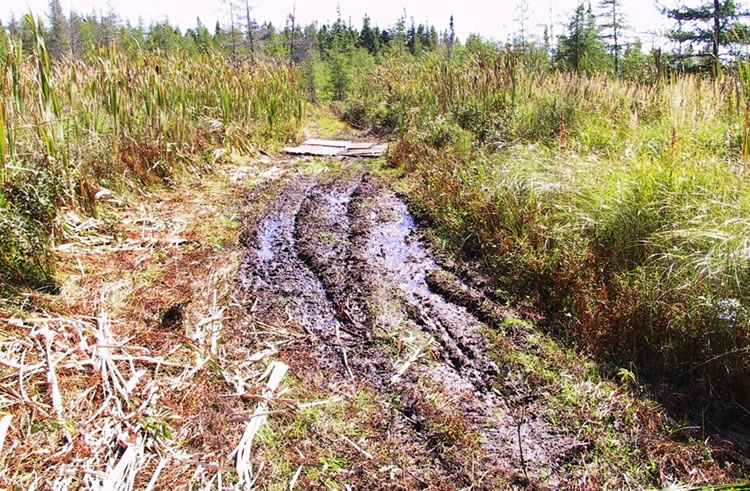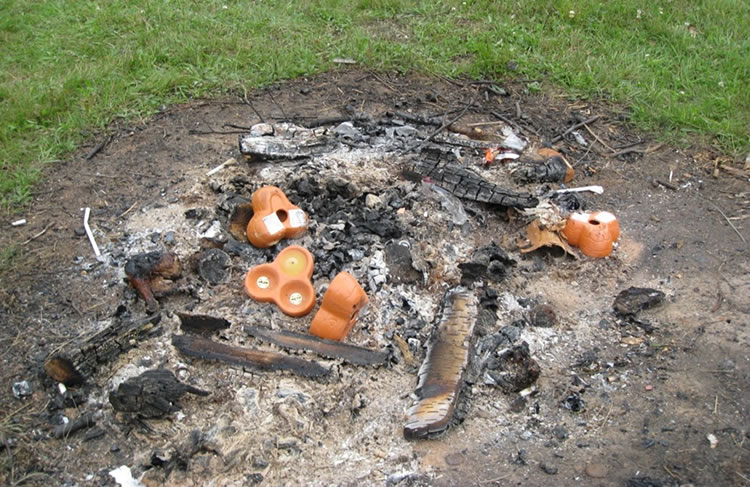Tintamarre National Wildlife Area Management Plan: chapter 3
3 Management challenges and threats
The challenges and threats faced by Tintamarre National Wildlife Area (NWA) are managed in the context of the broader upper Bay of Fundy and Chignecto Isthmus ecosystems. Although activities that occur outside of the boundary of the NWA are beyond the scope of this management plan, many of these factors have direct bearing on the successful management of Tintamarre NWA. A summary of the more salient issues follow.
3.1 Wind power
The Chignecto Isthmus is an important area for birds, and Tintamarre NWA, with its diversity of wetland habitats, is a concentration area for breeding and migrating birds. The development of wind turbine farms to generate electricity has the potential to harm birds directly, but a greater unknown is potential changes to bird flight paths around such farms that may possibly negate the value of habitat under protection. A wind farm is currently being proposed (2012) for the Tantramar and Aulac marshes, and a wind farm has already been developed on dykelands adjacent to the John Lusby NWA near Amherst, Nova Scotia. Studies are ongoing, but concern may be warranted, as some migratory birds known to pass over the Tintamarre NWA, such as Common Eider (Erskine and Smith 1986), are sometimes killed by flying into existing human-made structures on the Tantramar dykelands (MacKinnon and Kennedy 2011).
3.2 Tourism
Ever-increasing ecotourism, while often providing valuable education opportunities to the public, adds additional pressures to protected areas that are specifically set aside to protect habitat and benefit wildlife. The blurring of the lines between ecotourism and adventure tourism adds to the problem of cumulative environmental effects. As local communities and businesses try to attract tourism dollars, public lands and protected areas such as Tintamarre NWA are sometimes advertised as destinations by external interests, often without a full understanding of the regulations by which an area is protected. Visitors to sites such as Tintamarre NWA may not always understand the regulatory distinction between a park and an NWA. Invariably, concession to improving public use and public access is to the detriment of wildlife, and concessions, once made, are not easily retracted. Additional resources (staff and infrastructure funds) would be required to support an increase in tourism-based visitation to this protected area.
3.3 Off-road vehicles
Illegal use of off-road vehicles (ORVs) such as all-terrain vehicles, especially in regions abounding in wetlands, results in habitat loss and degradation or destruction of plant cover, and it leaves lasting scars on the landscape (Hosier and Eaton 1980; Ross 1992). ORV use can also lead to soil compaction, removal of the top layer of soil, and alterations to drainage, which in turn may degrade or destroy plant cover and the habitat of most local animal species.
The use of ORVs in streams and wetlands results in habitat destruction and loss. Portions of the sphagnum bog and ericaceous heath wetlands within Tintamarre NWA, particularly in the area of the Grassy Hole Lakes, show such scars (Figure 13). Often, the worst damage is in the form of “braiding,” where successive operators, in order to bypass a wet area, make a series of new and parallel trails adjacent to an existing one. Use of ORVs is prohibited within Tintamarre NWA.

3.4 Camping and open fires
Illegal camping, usually accompanied by open camp fires and damage to vegetation, is a problem. Trash associated with camping and left on site can also be a hazard to wildlife (Figure 14). Of greater concern are camp fires in woodland habitat, especially during the dry summer months. The forests of Tintamarre NWA border a number of private holdings and residences, and an illegal fire may put both the habitat under protection and private property at risk. The lakes and streams within the NWA are remote and have few access points, complicating fire suppression should an event occur.

3.5 Predicted climate change context
Predicted sea level rise of 1.0 m over the next century is likely to result in increased flooding of low-lying areas (Shaw et al. 1998). Existing dykes that protect much of the agricultural lands around Cumberland Basin are designed for existing conditions and would require significant modifications to withstand increased tide height and storm surges. A breach of the coastal dykes, as has happened in the past, would result in the flooding of the low-lying marshes of Tintamarre NWA. Significant levels of intrusion of salt water into freshwater wetlands result in rapid death of flora and fauna that are not salt tolerant.
The existing coastal dykes protect not only agricultural lands, but also significant infrastructure on the Tantramar, including the Trans-Canada Highway, Canadian National Railway line, and high voltage power transmission lines between New Brunswick and Nova Scotia.
3.6 Invasive species
Plants, such as Glossy Buckthorn (Rhamnus frangula), Phragmites (Phragmites communis [and P. australis]), Purple Loosestrife (Lythrum salicaria) and Reed Canary Grass may be invasive, and expansion of these species may dictate some controls or removal (White et al. 1993).
3.7 Fish passage
Many species of fish in Atlantic Canada are diadromous, spending part of their life cycle in fresh water and part in marine waters. The ability to overcome obstacles to migration differs among fish species. The design of fish passage structures that were previously approved by Fisheries and Oceans Canada have been recently shown not to successfully allow the passage of many fish species (Roscoe and Hinch 2010). The Front Lake fishway was built around 1965. The fishway is a pool and weir design with lifts of 30 cm between the pools. It is part of a water control structure that manages the water level in Front Lake and handles the flow from a 26 km² watershed. This fishway has been shown to be an impediment to the migration of Gaspereau, although species such as American Eel and Brook Trout can pass through the structure (Andrews 2014).